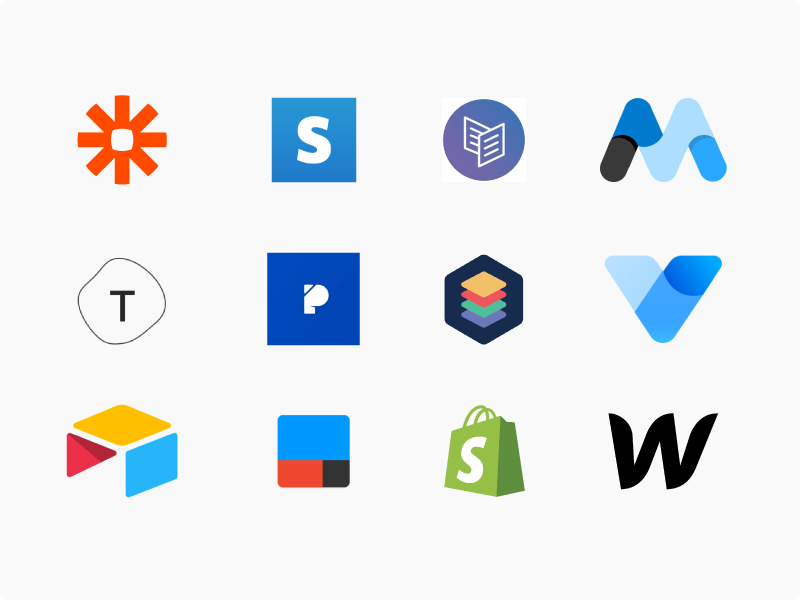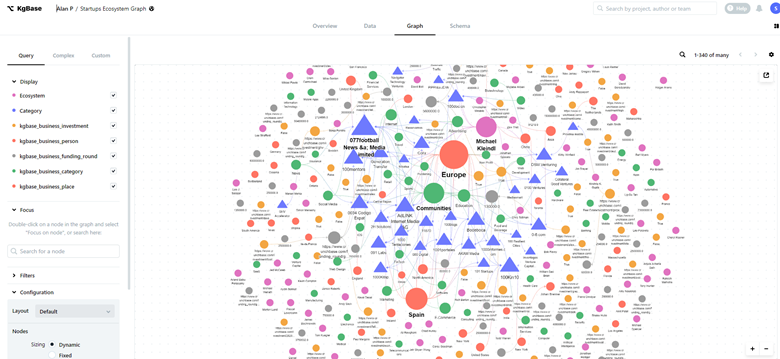No-Code Open Platform Database Development: Encouraging Businesses to Build Faster
No-Code Open Platform Database Development: Encouraging Businesses to Build Faster
Blog Article
Opening the Possible of Scalable Data Sources: No Coding Required for Seamless Data Integration and Management
The appearance of no-code remedies is transforming exactly how organizations approach scalable data sources, making it possible for smooth data assimilation and administration without the demand for extensive coding abilities. As businesses seek to harness the power of their information, the vital features and preferred devices that facilitate this shift warrant more detailed evaluation.
Comprehending Scalable Databases
How do scalable databases accommodate the expanding demands of contemporary applications? Scalable data sources are designed to handle enhancing volumes of information and individual requests without sacrificing performance.
In addition to scaling strategies, scalable databases often incorporate innovative architectural features, such as sharding and duplication. Sharding separates information into smaller sized, convenient items, allowing parallel processing and reducing response times. Duplication makes certain information accessibility and resilience by creating duplicates of information across multiple nodes, protecting against possible data loss.
Furthermore, contemporary scalable databases utilize cloud computer innovations, allowing vibrant source allotment based on need. This adaptability allows companies to react swiftly to fluctuating work, making sure ideal efficiency and individual experience. As businesses significantly depend on data-driven decision-making, comprehending scalable data sources ends up being important for using their potential in sustaining contemporary applications.
Advantages of No-Code Solutions
As organizations progressively take on scalable databases to handle their growing information needs, the need for user-friendly growth tools has additionally risen. No-code remedies are becoming a vital element in this landscape, providing a number of vital advantages that enhance operational effectiveness and availability.

Secondly, these options dramatically speed up the advancement process. By removing the requirement for coding, organizations can swiftly prototype applications, repeat on styles, and deploy options in a fraction of the time called for by standard techniques. This agility makes it possible for organizations to respond swiftly to market needs and changing problems.
In addition, no-code platforms frequently come geared up with pre-built themes and combination capacities, simplifying the link with existing systems. This lowers the intricacy commonly linked with information integration, ultimately lowering the total expense of ownership. Therefore, organizations can concentrate on leveraging information understandings instead of obtaining slowed down in technical intricacies, maximizing their tactical potential.
Trick Attributes for Data Integration
Effective information combination is necessary for organizations seeking to harness the full capacity of their scalable databases. Secret features that promote smooth information combination include durable data adapters, automated information mapping, and real-time data synchronization.
Robust information connectors enable organizations to connect different data sources, whether they reside on-premises or in the cloud, making sure detailed access to diverse datasets - no-code. Automated information mapping simplifies the process of lining up inconsonant data layouts and structures, enabling quicker and much more precise assimilation procedures. This function minimizes the need for hand-operated intervention, decreasing the possibility for errors
Real-time data synchronization is an additional crucial feature that makes sure information consistency across platforms. By updating data in real-time, companies can maintain a accurate and current sight of their info landscape, which is vital for prompt decision-making. Furthermore, straightforward control panels and visual analytics improve the visibility of integrated information, permitting stakeholders to acquire workable understandings effortlessly.
Finally, data governance capabilities make sure conformity with continue reading this regulations and inner policies, protecting delicate info while advertising a society of data integrity. Collectively, these functions empower organizations to accomplish reliable and reliable information assimilation.
Popular No-Code Devices Available
Organizations significantly count on no-code devices to enhance their information assimilation procedures and improve workflows. These systems eliminate the demand for considerable programs expertise, enabling individuals to develop applications and manage information with user-friendly aesthetic user interfaces. Among one of the most prominent no-code tools are Airtable, Zoho Designer, and Bubble, each offering unique features tailored for numerous company demands.
Airtable combines the simplicity of spread sheets with the functionality of data sources, permitting individuals to organize and collaborate on data successfully. Zoho Maker offers an extensive suite of personalized applications, making it possible for customers to automate operations and incorporate with various other Zoho items flawlessly. Bubble attracts attention for its ability to develop innovative web applications without coding, satisfying start-ups and enterprises alike.
In addition, tools like Zapier and Integromat facilitate automatic workflows by integrating multiple applications, find this allowing individuals to connect data sources effortlessly. These no-code options not just conserve time but likewise empower teams to concentrate on critical efforts instead try this out of technological difficulties. As organizations remain to welcome electronic improvement, the adoption of no-code tools is established to reinvent the means data assimilation and management are come close to, driving effectiveness and technology.
Real-World Usage Cases
Various industries have actually successfully implemented no-code devices to address particular difficulties and boost operational performance. In the healthcare industry, as an example, carriers utilize no-code systems to simplify patient document management and visit organizing. By incorporating numerous data resources without considerable coding, healthcare experts can focus much more on individual treatment rather than administrative jobs.
In retail, businesses utilize no-code data sources to manage stock and sales data in genuine time. no-code. This enables for quick decision-making pertaining to supply degrees and advertising methods, ultimately improving client contentment and sales performance
In addition, economic establishments have taken on no-code remedies to automate conformity reporting and data evaluation, accelerating and lowering hands-on errors feedback times to governing modifications.

These real-world use situations illustrate the convenience and effectiveness of no-code devices in numerous industries, verifying that scalable data sources can drive development and functional performance without the need for comprehensive programs knowledge.
Verdict
In conclusion, the integration of no-code services into scalable data source management represents a substantial development in information managing capabilities. By helping with seamless connections between diverse data sources and automating process, these tools equip organizations to effectively manage expanding information quantities without the requirement for technological know-how. The resultant improvement in operational performance and data-driven decision-making highlights the transformative potential of these cutting-edge techniques within different markets, ultimately sustaining calculated objectives and cultivating business development.
Duplication guarantees information accessibility and sturdiness by creating duplicates of data across multiple nodes, safeguarding versus possible data loss. - no-code
Robust information ports allow companies to link numerous data resources, whether they live on-premises or in the cloud, ensuring detailed access to varied datasets. Automated information mapping simplifies the procedure of aligning inconsonant information layouts and structures, allowing for quicker and extra precise integration processes.Real-time data synchronization is an additional essential attribute that guarantees information consistency across systems. By assisting in seamless links between diverse data resources and automating workflows, these devices equip companies to successfully handle expanding information quantities without the demand for technological experience.
Report this page